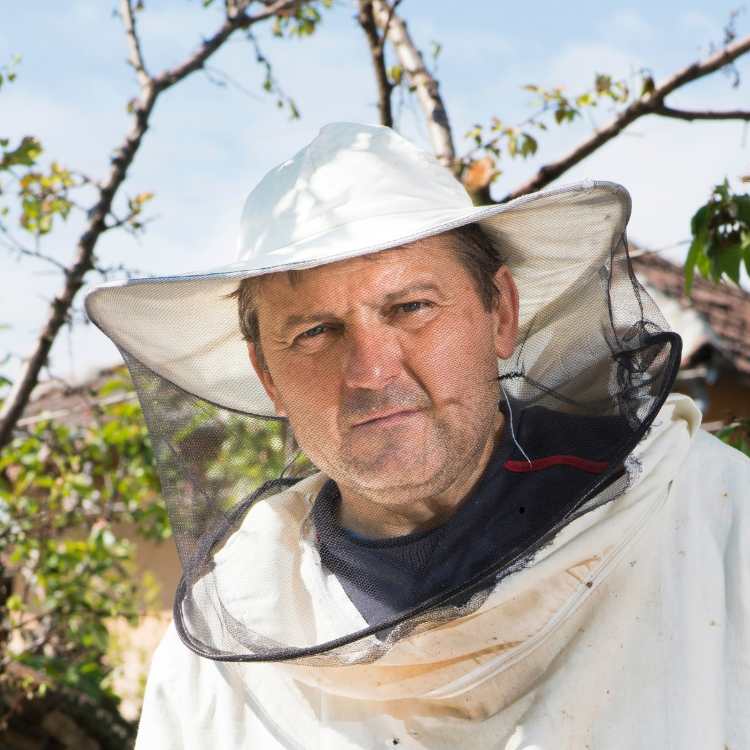A sharp buzz near the ear, a flash of stripes, a jolt of panic. Was that a bee or a wasp? Most people are not able to differentiate at first glance and the confusion usually leads to swats, stings or sprinting away. The showdown between honey bee vs yellow jacket is a classical case of mistaken identity. They look familiar, show up in the same species, and can both sting. But both of these insects are not the same. Far from it.
And knowing the difference is much more than trivia. It matters for your safety and for the health of the pollinators.
Appearance: Honey bee vs yellow jacket
The first and easiest way to distinguish between the two species is by their looks. At a glance, both look like small, yellow, flying insects. But once you take a closer look, the difference between them becomes clear.
- Honey bees: They are much rounder with a golden brown color and a fuzzy body. That fuzz is not just for the looks, either. It helps them carry pollen from flower to flower. Their stripes are much more muted and their legs look chunkier as they hang in flight.
- Yellow jackets: They are much sleeker and shinier than honey bees. Their stripes are bold: jet black against neon yellow. They have smooth bodies, with a sharp, well defined waist where the abdomen pinches near the thorax. This is a classic wasp shape that can be pretty hard to miss.

Temperament: Honey bee vs yellow jacket
While both honey bees and yellow jackets sting, their reasons and reactions couldn’t be any more different.
- Honey bees: These guys are typically docile and are more focused on pollinating, foraging and caring for the hive. A honey bee will only sting if it truly feels threatened, and when it does, it pays the ultimate price. Its barbed stinger lodges into the skin and tears from the bee’s body, killing it shortly after.
- Yellow jackets are wired differently. They are aggressive and territorial. Disturb their nest and they won’t just sting once. They sting over and over. Worse, they are even known to chase after threats in a coordinated attack.

Honeybees near the entrance of the hive
Nesting habits: Honey bee vs yellow jackets
Another major difference in the honey bee vs yellow jacket matchup lies in where and how they nest.
- Honey bees: They usually live in carefully constructed hives. These can be wild or maintained by beekeepers. Honey bees prefer cavities like tree hollows, hive boxes and more to build intricate wax combs inside. Their colonies are large, stable and cooperative.
- Yellow jackets: Yellow jackets tend to nest in the ground, in wall crevices, or even in attics and sheds. Their nests start small in the spring, but by late summer, the population explodes. That is also when their aggression peaks. Step near an underground nest in August, and you will find out just how fast they are able to mobilize and launch an assault.

A yellow jacket nest
Pollinators vs predators: Honey bee vs yellow jacket
Both of these insects play a very distinct role in the ecology.
- Honey bees: Honey bees are elite pollinators and their role in agriculture cannot be overstated. These tiny insects are responsible for pollinating billions of dollars’ worth of crops annually. Almonds, apples, and berries all depend on honey bee pollination.
- Yellow jackets: Surprisingly, these guys do some good as well. While they do sip nectar and occasionally pollinate, they are far more interested in hunting other insects. They feed on caterpillars, grubs and flies, which are pests that damage crops and gardens. In the honey bee vs yellow jacket divide, bees spread life; yellow jackets reduce pests.

Bees pollinating flowers
How to handle a sting?
Stings are common, and you need to know how to handle them. Knowing what bit can help treat it right.
- Honey bee: If a honey bee stings, it leaves behind a barbed stinger stuck in the skin. Remove it quickly by scraping it out, but remember not to pinch it. Clean the area, apply ice, and take an antihistamine or pain reliever if needed. The pain fades in a few hours unless there is a case of allergy.
- Yellow jacket: Yellow jackets can sting multiple times, and they do not leave a stinger. Care for the stung area, ice and watch for swelling. Venom can cause other more serious reactions, especially with multiple stings. If you are stung multiple times or feel dizzy, short of breath or nauseous, seek medical help.
Know the difference, respect the work
When we confuse bees and wasps, it can result in making poor choices like swatting at a pollinator or walking near a dangerous wasp nest. The honey bee vs yellow jacket discussion is not just an academic exercise. It has an impact on how we can treat these insects, how we can defend ourselves from them, and how we can help protect the ecosystems they support.
One produces honey and helps to pollinate crops. The other provides pest control and definitely delivers a mean sting. Both have their place, but understanding who’s who will keep you safe—and possibly help you acknowledge a little of the balance of nature.
For more interesting stories from the world of bees, consider following our full blog here.





